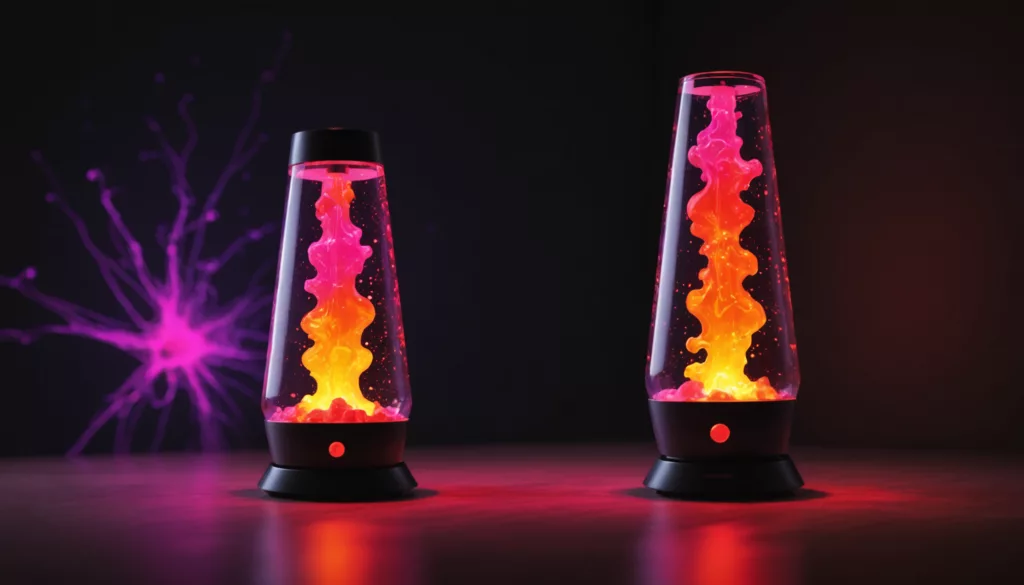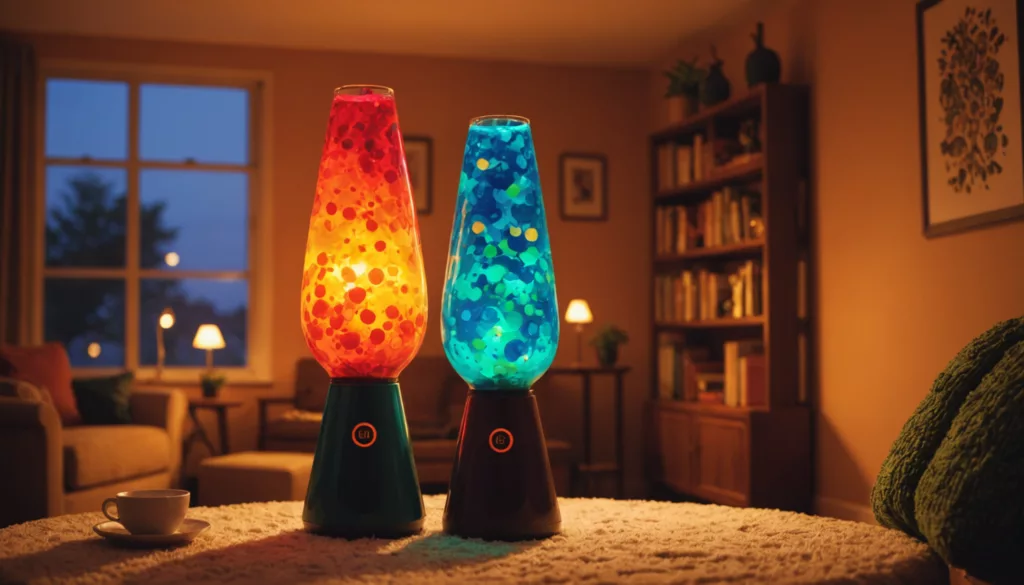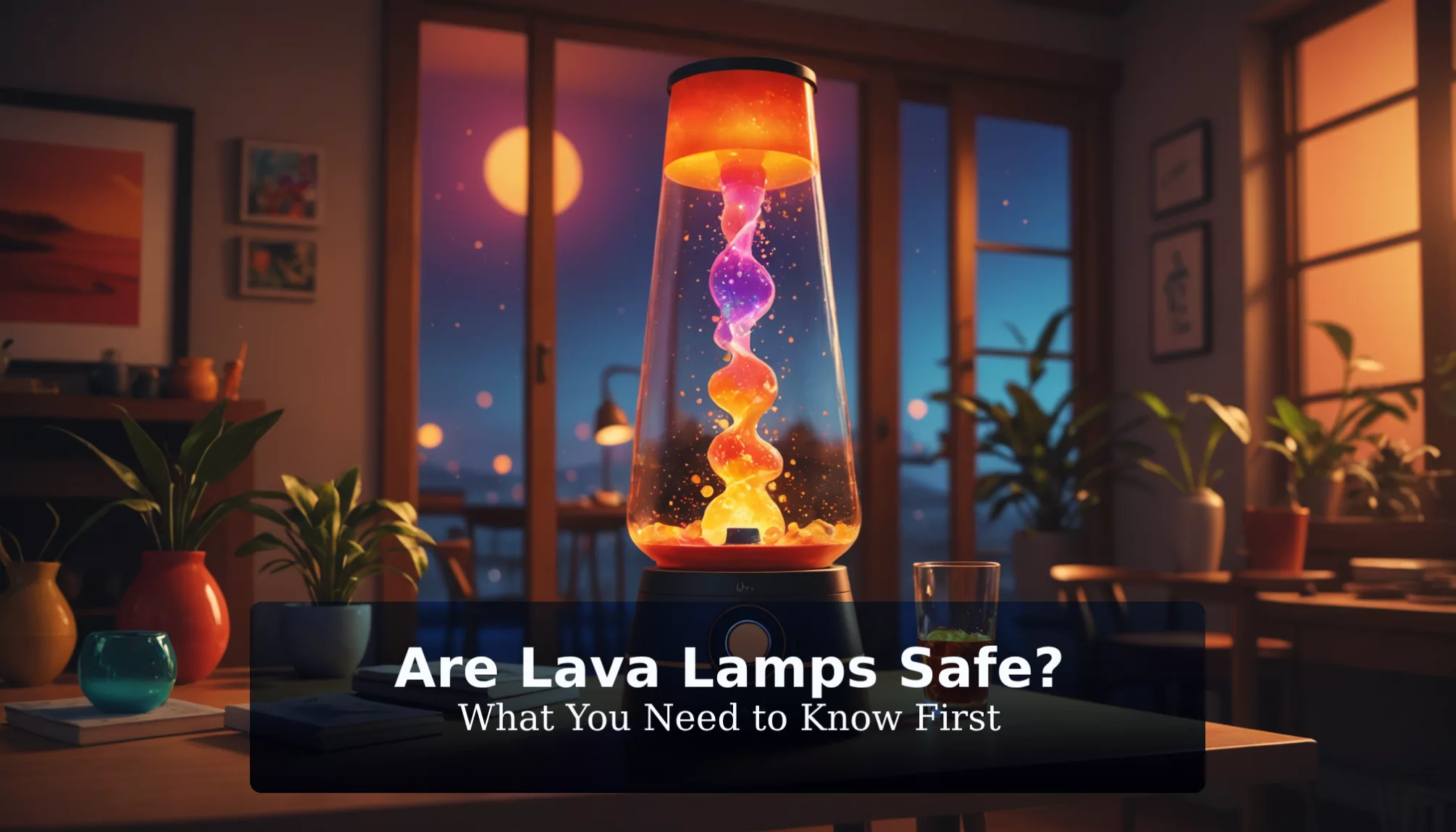Are Lava Lamps Safe? What You Need to Know First
Lava lamps have a magical way of bringing a chill vibe to any room, but have you ever wondered, are lava lamps safe? These groovy decorations not only look cool but can also be a source of relaxation. However, it’s super important to know how to use them safely so you can enjoy their mesmerizing glow without any worries! If you don’t understand the safety rules, you could risk overheating or even damaging your lamp, which is not what anyone wants.
In this article, we’ll dive into the inner workings of lava lamps, explore potential safety concerns, and give you some handy tips on how to keep your lava lamp in tip-top shape. Plus, you’ll learn the best spots to place your lamp for maximum effect and comfort. Get ready to become a lava lamp expert and make your room the ultimate cool hangout zone!
Are Lava Lamps Safe? What You Need to Know

Lava lamps are decorative lights known for their calming effects. But are they safe? This section explains the parts of a lava lamp, how they work, and the safety risks.
Understanding the Components of a Lava Lamp
A lava lamp has three main parts:
- Glass Container: Shaped like a tall bottle.
- Colored Wax Mixture: Found inside the container.
- Clear Liquid: Surrounds the wax.
The wax heats up from a light bulb at the bottom. This makes the wax rise through the liquid. When it cools, the wax drops down. This cycle creates the lamp’s signature flow.
How Lava Lamps Work: The Science Behind Them
Lava lamps work using science. When the wax heats up, it becomes less dense than the liquid, causing it to rise. As the wax gets cooler, it becomes denser and falls. This movement is called Rayleigh–Taylor instability. It describes how different fluids move when they have different densities.
Evaluating the Risk: Safety Concerns with Lava Lamps
Lava lamps are generally safe, but there are risks. Overheating is the main concern. If left on too long, the lamp can get too hot, possibly causing burns or fires. Always follow the manufacturer’s instructions for safe use.
Older lava lamps might have had carbon tetrachloride, a banned toxic chemical. Modern lava lamps are safer as they do not use this substance. Check product details for safety features.
- Key Points:
- Avoid leaving the lamp on too long.
- Follow usage guidelines.
- Ensure no old toxic chemicals are present.
How to Take Care of Your Lava Lamp

Lava lamps add a colorful touch to any space. To keep them safe and working well, proper care is key. Here are some tips for using, maintaining, and avoiding damage to lava lamps.
Tips to Start Using Your Lava Lamp Safely
- Select the Right Spot: Place the lamp on a stable, heat-resistant surface to prevent tipping and protect surfaces from heat.
- Avoid Extreme Conditions: Keep the lamp away from drafts, direct sunlight, and extreme temperatures, as these can affect wax flow.
- Follow Instructions: Adhere to the manufacturer’s guidelines for use, including recommended operating times. Avoid running the lamp for longer than 8-10 hours at a time.
Long-Term Maintenance to Ensure Safety
- Check Regularly: Inspect the cord and bulb for signs of wear or damage. A frayed cord or broken bulb can be hazardous.
- Monitor Wax Flow: If the wax becomes cloudy or doesn’t flow well, turn off the lamp and let it cool before troubleshooting.
- Keep it Clean: Dust the lamp regularly to maintain its appearance and ensure it operates smoothly.
What to Avoid to Prevent Damage and Dangerous Situations
- Don’t Shake the Lamp: Avoid shaking or moving the lamp while it’s on, as this can mix the wax and liquid, affecting flow.
- Use Correct Bulbs: Only use bulbs that meet the manufacturer’s specifications. Higher wattage bulbs can cause overheating.
- Keep Away from Water: Avoid water exposure, as spills can cause electrical issues or damage the lamp.
By following these tips, you can enjoy your lava lamp safely for many years. (Wikipedia: Lava Lamp)
What Causes Overheating in Lava Lamps?

Lava lamps are popular decorative items known for their unique look. However, they can overheat if not used correctly. Overheating can happen if the lamp runs too long, uses the wrong bulb, or isn’t placed properly. Understanding these factors helps you keep your lamp safe.
Common Signs Your Lava Lamp May Overheat
Recognizing signs of overheating can prevent damage. Look for these indicators:
- Excessive Bubbling: If the wax bubbles wildly or moves strangely, the lamp might be too hot.
- Discoloration: The wax or liquid might become cloudy or change color.
- Hot to the Touch: If the glass feels very hot, take caution.
- Unusual Movement: If the wax doesn’t flow smoothly, this might suggest overheating.
Watching for these signs helps you act quickly.
Dangers of Overheating and Steps to Prevent It
Lava lamp overheating can be dangerous. Risks include:
- Glass Breakage: The glass can crack or break from too much heat.
- Wax Instability: Overheated wax might not flow properly.
- Fire Hazard: Rarely, overheating can lead to a fire hazard.
Prevent issues by:
- Limiting Operation Time: Use your lamp for 6-8 hours max.
- Using Correct Bulbs: Follow the manufacturer’s advice on bulb type and wattage.
- Proper Placement: Place on a stable, flat surface away from sunlight and heat.
These steps help keep your lamp safe to use.
How to Know When to Turn Off Your Lava Lamp
Turning off your lava lamp at the right time is crucial. You should turn it off if:
- You see any signs of overheating.
- It has been on longer than recommended.
- It feels too hot to touch.
Switching it off lets it cool and prevents hazards. Wait for it to cool before turning it back on. Following these tips ensures your lava lamp remains a safe decoration.
References
Learn the Perfect Environment for Lava Lamps

Ideal Room Conditions for Your Lava Lamp
Lava lamps need the right conditions to work well and stay safe. They perform best in a room kept between 68°F (20°C) and 76°F (24°C). This temperature range allows the wax to flow smoothly.
- Temperature: Keep the room between 68°F (20°C) and 76°F (24°C).
- Avoid Direct Sunlight: Sunlight can alter temperatures and affect the wax’s movement.
- Stay Away from Heat Vents: Placing the lamp near heating vents can lead to overheating.
Choosing the Right Placement in Your Room
Where you place your lava lamp matters for both safety and function.
- Flat Surface: Always use a flat, stable surface to prevent spills.
- Accessibility: Keep the lamp within easy reach for switching on and off.
- Keep Away from Edges: Avoid placing the lamp near table or shelf edges to prevent falls.
- Placement Tips:
- Leave several inches between the lamp and walls or other objects for airflow.
- Choose a location where it won’t be bumped by people or pets.
Enhancing Ambiance: How to Make Your Room Relaxing
Lava lamps can create a calm, relaxing atmosphere.
- Dim Lighting: Use in dimly lit rooms for a soothing effect.
- Color Selection: Pick colors that match your room’s theme. Bright colors energize, while soft hues bring peace.
- Group with Other Decor: Pair with candles or pillows to enhance the room’s feel.
- Ambiance Tips:
- Use during quiet activities like reading to enhance relaxation.
- Combine with soft music or nature sounds for a calming experience.
By setting the right conditions and placement, you can safely enjoy the beauty and ambiance of your lava lamp.
Conclusion
In summary, lava lamps can be a cool addition to your room, but it’s essential to use them safely. Remember to always follow the manufacturer’s instructions and keep an eye out for signs of overheating. Taking care of your lava lamp will help it last longer and work better!
By ensuring the right placement and conditions, you can create a relaxing atmosphere and enjoy those mesmerizing motions. So go ahead, set up your lava lamp properly, and let it light up your space safely. If you’re curious about more ways to make your room cozy and inviting, keep exploring!
FAQs
1. Are there any specific safety standards for lava lamps?
Lava lamps do not have unique safety standards. However, they should follow general electrical appliance safety guidelines. Always place the lamp on a stable, flat surface. Do not leave it unattended for long periods. This helps prevent accidents and ensures safe operation. It’s vital to follow the manufacturer’s instructions for safe use.
2. Can lava lamps be left on overnight?
It’s not safe to leave lava lamps on overnight or for long periods. They can overheat, causing the glass to break or even posing a fire risk. Always monitor your lava lamp and turn it off when not in use to keep it safe.
3. What should I do if my lava lamp starts leaking?
If your lava lamp leaks, unplug it right away. The contents can be hazardous, so handle them with care. Dispose of the lamp according to local waste rules to stay safe. Avoid touching the leaking substance.
4. How long should a lava lamp last?
With proper care, a lava lamp can last 5 to 10 years. Keep it clean and avoid shaking it too much to extend its life. Follow the manufacturer’s instructions for the best performance.
5. What are the signs of a faulty lava lamp?
Watch for these signs of a faulty lamp:
- It gets too hot.
- The wax does not move.
- There are visible leaks.
If you notice any of these, unplug the lamp immediately and check it.







